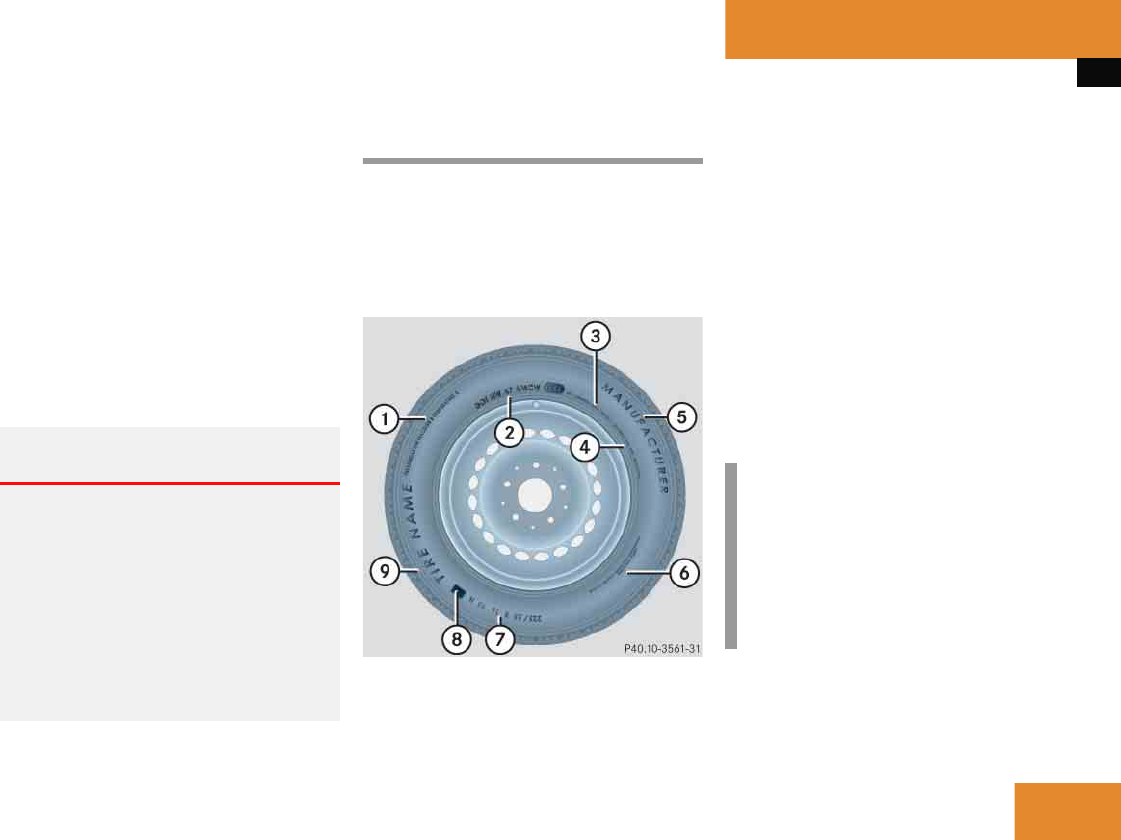
313
Operation
Tires and wheels
Overinflated tire inflation pressure
Overinflated tires can:
ț adversely affect handling
characteristics
ț cause uneven tire wear
ț be more prone to damage from road
hazards
ț adversely affect ride comfort
ț increase stopping distance
Tire labeling
Besides tire name (sales designation) and
manufacturer name, a number of markings
can be found on a tire.
Following are some explanations for the
markings on your vehicle’s tires:
1 Uniform Quality Grading Standards
(
୴ page 320)
2 DOT, Tire Identification Number (TIN)
(
୴ page 318)
3 Maximum tire load (
୴ page 319)
4 Maximum tire inflation pressure
(
୴ page 320)
5 Manufacturer
6 Tire ply material (
୴ page 322)
7 Tire size designation, load and speed
rating (
୴ page 314)
8 Load identification (
୴ page 317)
9 Tire name
Warning! G
Follow recommended tire inflation
pressures.
Do not overinflate tires. Overinflated tires
can adversely affect handling and ride
comfort, wear unevenly, increase stopping
distance, and result in sudden deflation
(blowout) because they are more likely to
become punctured or damaged by road
debris, potholes etc.
i
For illustration purposes only. Actual
data on tires is specific to each vehicle
and may vary from data shown in above
illustration.
For more information, see “Rims and
Tires” (
୴ page 419).


















